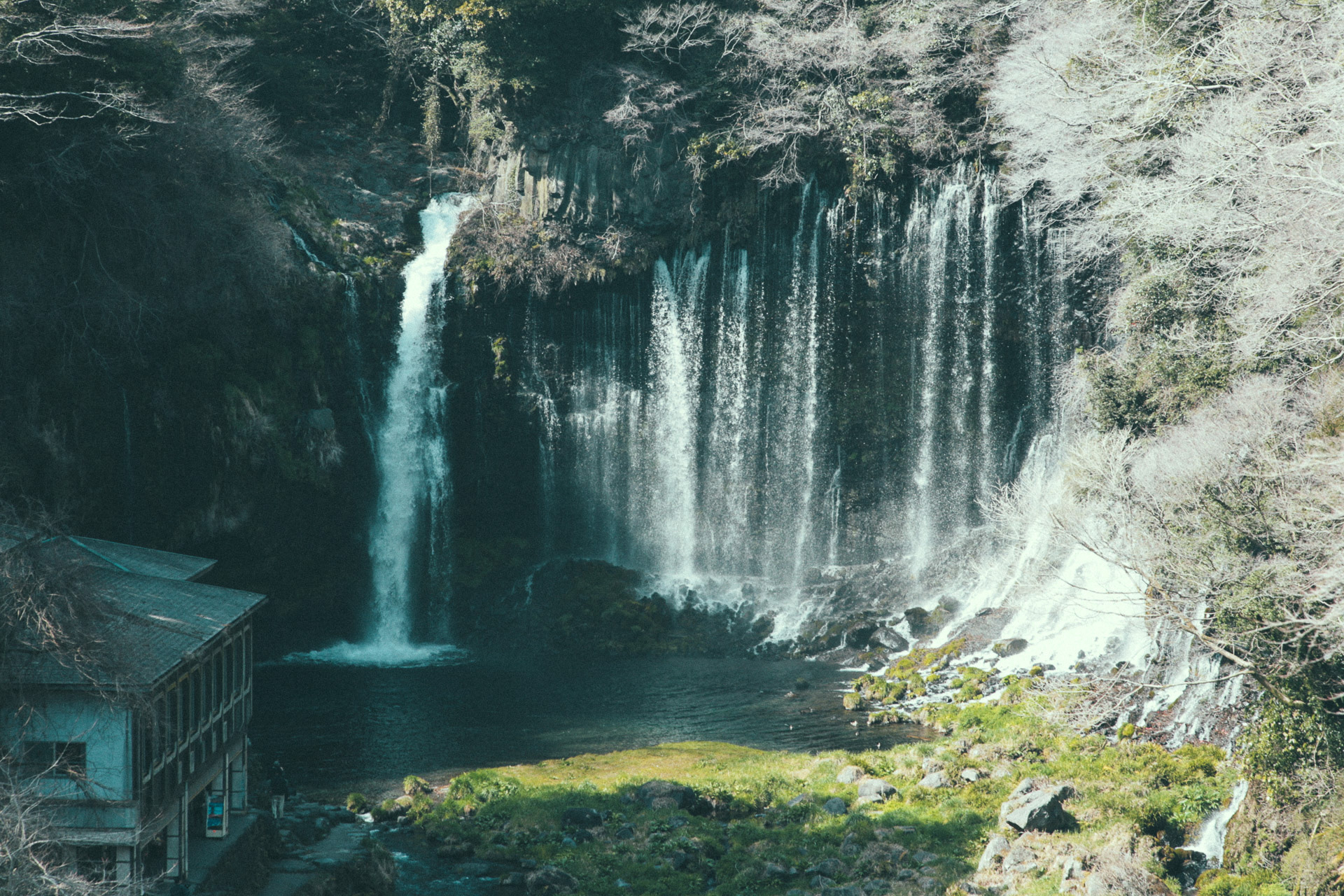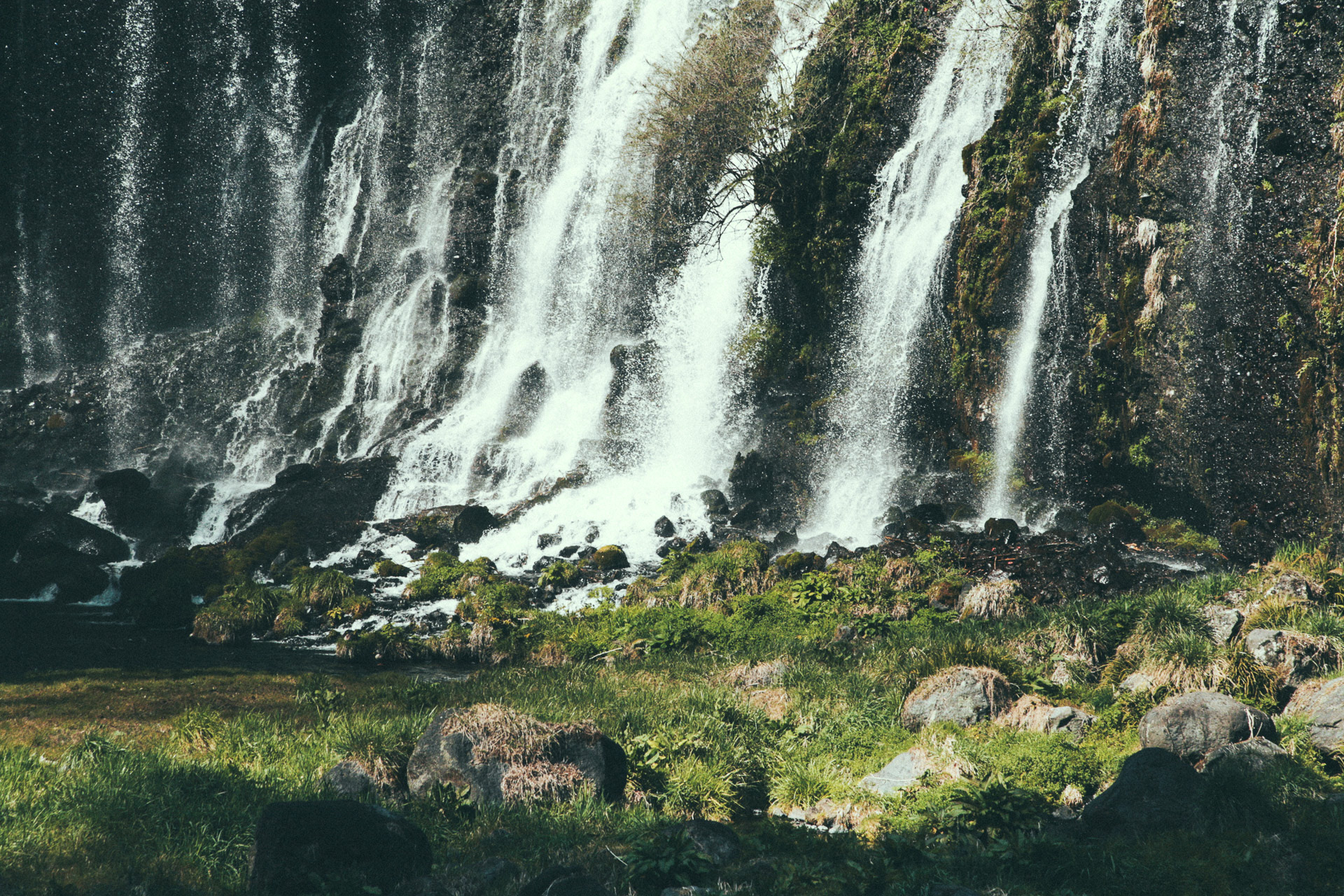Day 7: Fujigoko
Sunday, March 23rd, 2008
After another unforgettable breakfast at the hotel, Yasuko and I left to go visit the amazing Fujigoko region, while the rest of the family headed back to Nagoya.






From Yuya Onsen, first we drove south to reach the Tomei Expressway the connects Nagoya and Tokyo, and then we took the highway and drove east across the entire Shizuoka prefecture, along the coast.
Some Service Areas along the expressways in Japan must be visited. Fujikawa SA is certainly one of those, if you happen to be in the area.
Opened in 2000, more than 3 million people every year stop here to eat at one of the many restaurants, do some shopping, taste the specialties cooked by the many outdoor vendors, all while enjoying a stunning view of Fuji-san.






Our first stop was at the Shiraito Falls (白糸の滝, Shiraito no Taki), located in the southwestern foothills of Mount Fuji. Ranked among the most beautiful waterfalls in Japan, the 150 meter wide cascade is fed by the volcano's spring water and flows off the edge of a 20 meter high cliff in thin white streams that resemble hanging threads of silk - hence its name. The base of the waterfall is easily accessible from the road via a walking trail in just a few minutes. Several souvenir shops line the trail that leads down to the falls.






Next, we stopped at Lake Tanuki (田貫湖 Tanuki-ko), a small lake located on the west side of Mount Fuji. Originally a swampy area, the lake is now a popular vacation location, with camp sites, fishing, boating and is noted for its views of Mount Fuji.


Next, we reached Lake Motosuko (本栖湖), the westernmost of the Fujigoko region and best known for its appearance on the reverse side of the 1000 yen bill and the former 5000 yen bill. The lake is difficult to access by public transportation and largely undeveloped except for a few campsites around its shores.
Fujigoko (lit. Fuji Five Lakes) is the name of the area located at the base of Mount Fuji in the Yamanashi prefecture of Japan. The name of this region comes from the fact that there are five lakes formed by previous eruptions of Mount Fuji.
The five lakes are located in an arc around the northern half of Mount Fuji. In ancient times, lava flow from a volcanic eruption of Mount Fuji spread across the area, damming up rivers and resulting in the formation of these lakes. They are all considered excellent tourist attractions and fishing spots. Interestingly, three of the five lakes remain still connected by underground waterways.
The view of mount Fuji from the parking area located on the western side of the lake was perfect. Since sunset was just about an hour away, I decided to stay at this location to wait for the sun to go down. A bunch of photographers had already lined up their tripods along the fence and were waiting in their cars. Unfortunately, though, I didn't carry a tripod, so I started trying to find a way to balance my Hasselblad on one of the fence's poles.
While I was doing so, one of the photographers, the guy in the picture above, who didn't speak a single word of English, waved at me, walked to his car, opened the trunk, and took out a second tripod and handed it to me, almost apologizing for the fact that the tripod was older than the one he was using. And so, there I was, all set for sunset.
And this is on of the pictures that I took with my Hasselblad: